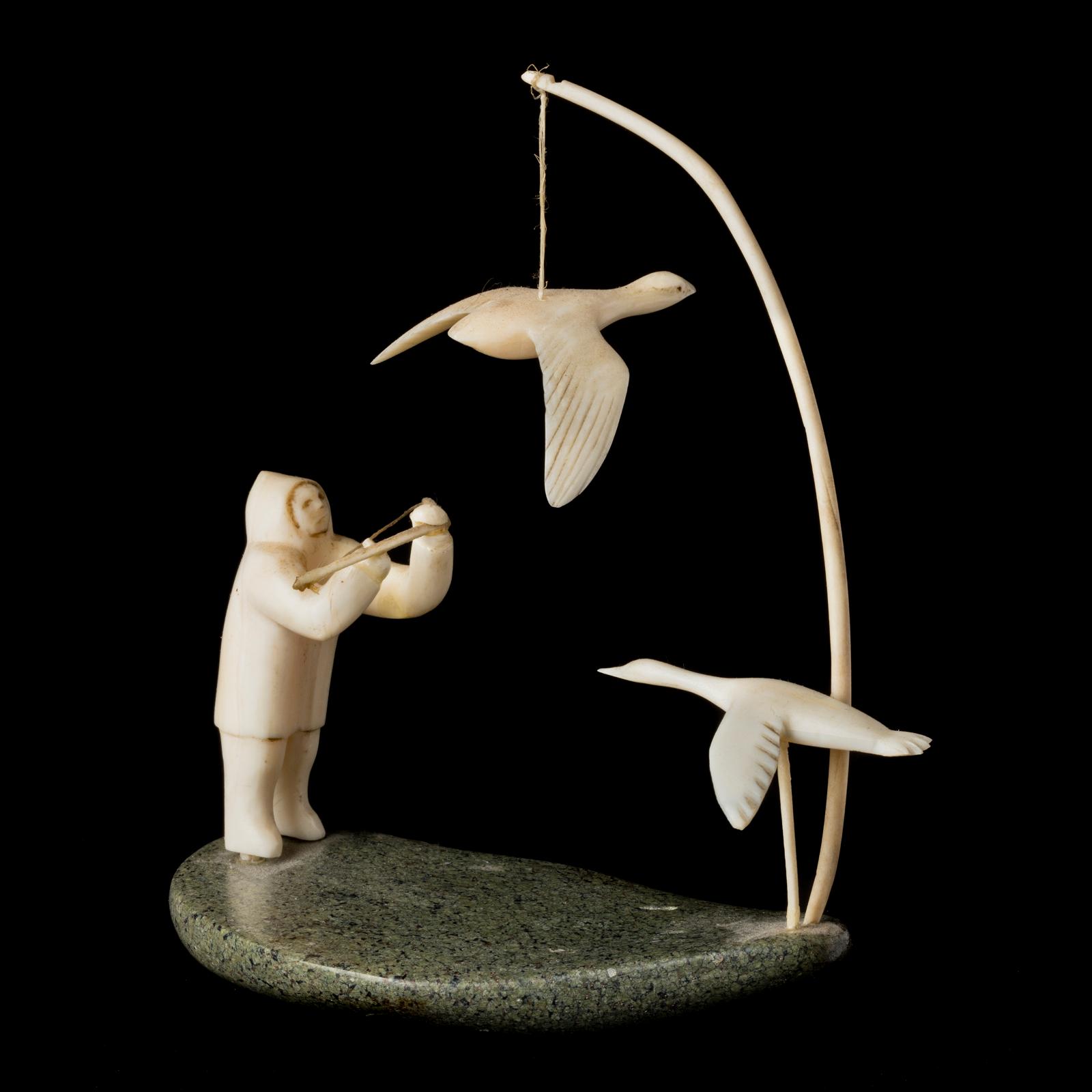
Bow Hunter And Two Birds, 1968
4.75 cms x 2.25 cms (1.87 ins x 0.89 ins)
Signed in syllabics and with disc no.
sculpted in 1968
Lot offered for sale by Waddington's, Toronto at the auction event "First Arts: Inuit & First Nations Art" held on Tue, May 28, 2019.
Lot 21
Lot 21
Estimate: CAD $2,500 - $3,500
Realised: CAD $2,400
Realised: CAD $2,400
Lot description - from the online catalogue*
Provenance:
Norman Hallendy Collection, Ottawa
Notes:
Mark Tungilik is probably the most famous Inuit ivory miniature carver. He was born in the Spence Bay (Taloyoak) area (in 1904, his daughter believes) then moved to Pelly Bay and finally Naujaat. Roman Catholic missionaries had been encouraging local Inuit to carve Inuit and Christian imagery in ivory already in the early 1940s, so Tungilik was already a skilled artist by the time James Houston showed up in 1950 to encourage carving production.
Bow Hunter and Two Birds is a classic example of the 1960s ivory miniature genre; a delicately rendered and beautifully balanced composition. Tungilik's artistry is apparent not only in the carving of the figures themselves but also in the creation of an enchanting little self-enclosed world.
References: for ivory hunting and fishing scenes by Tungilik dating as far back as the 1940s see Lorraine Brandson, Carved from the Land (Eskimo Museum, Churchill) 1994, pp. 90 and 142; Darlene Coward Wight, The Jerry Twomey Collection (Winnipeg Art Gallery, 2003) p. 109.
First Arts: Inuit & First Nations Art Auction www.firstarts.ca
Norman Hallendy Collection, Ottawa
Notes:
Mark Tungilik is probably the most famous Inuit ivory miniature carver. He was born in the Spence Bay (Taloyoak) area (in 1904, his daughter believes) then moved to Pelly Bay and finally Naujaat. Roman Catholic missionaries had been encouraging local Inuit to carve Inuit and Christian imagery in ivory already in the early 1940s, so Tungilik was already a skilled artist by the time James Houston showed up in 1950 to encourage carving production.
Bow Hunter and Two Birds is a classic example of the 1960s ivory miniature genre; a delicately rendered and beautifully balanced composition. Tungilik's artistry is apparent not only in the carving of the figures themselves but also in the creation of an enchanting little self-enclosed world.
References: for ivory hunting and fishing scenes by Tungilik dating as far back as the 1940s see Lorraine Brandson, Carved from the Land (Eskimo Museum, Churchill) 1994, pp. 90 and 142; Darlene Coward Wight, The Jerry Twomey Collection (Winnipeg Art Gallery, 2003) p. 109.
First Arts: Inuit & First Nations Art Auction www.firstarts.ca
Most realised prices include the Buyer's Premium of 18-25%, but not the HST/GST Tax.
(*) Text and/or Image might be subject matter of Copyright. Check with Waddington's auction house for permission to use.
(*) Text and/or Image might be subject matter of Copyright. Check with Waddington's auction house for permission to use.